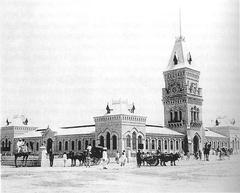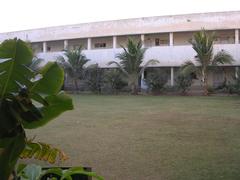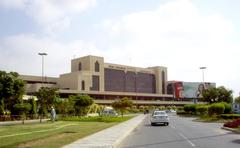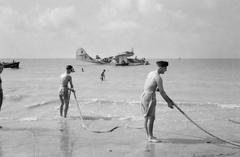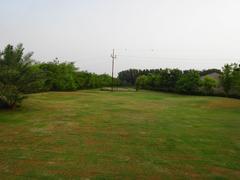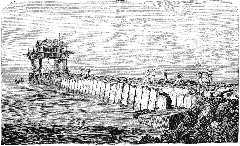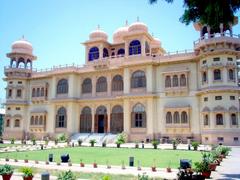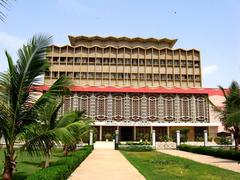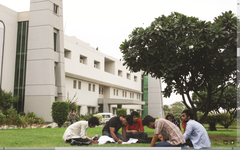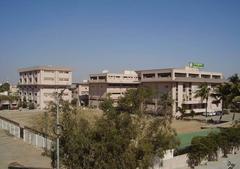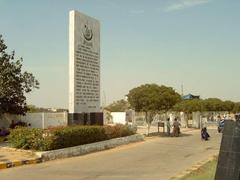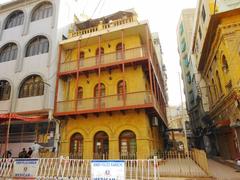
Comprehensive Guide to Visiting Karachi, Sindh, Pakistan
Date: 14/08/2024
Captivating Introduction
Welcome to Karachi, a city that pulsates with life, history, and an undeniable charm. Imagine stepping into a metropolis where ancient hunter-gatherers once roamed, where mighty empires left their mark, and where the echoes of revolutionary movements still resonate. Karachi isn’t just a city; it’s a living, breathing testament to centuries of human endeavor and resilience. From the flint tools of the Late Paleolithic era found near the Mulri Hills (Wikipedia) to the bustling port that launched Alexander the Great’s fleet (Newsline Magazine), Karachi’s story is as diverse as its population.
As you wander through its streets, you’ll encounter a sensory overload: the salty tang of the Arabian Sea at Clifton Beach, the mouth-watering aroma of sizzling kebabs on Burns Road, the vibrant hues of traditional Sindhi ajrak fabrics, and the cacophony of honking rickshaws and bustling markets. Karachi is not just a destination; it’s an experience, an adventure waiting to be unraveled. And who better to guide you through this urban jungle than a witty local friend, ready to share insider tips, hidden gems, and quirky customs? So buckle up and get ready for a journey through time and culture that only Karachi can offer.
Table of Contents
- [Historical Background of Karachi](#historical-background-of-karachihistorical-background-of-karachi)
- [The Enigmatic Origins](#the-enigmatic-originsthe-enigmatic-origins)
- [The Indus Valley Civilization: Karachi’s Prehistoric Urban Jungle](#the-indus-valley-civilization-karachis-prehistoric-urban-junglethe-indus-valley-civilization-karachis-prehistoric-urban-jungle)
- [Greeks, Romans, and Legendary Sailors](#greeks-romans-and-legendary-sailorsgreeks-romans-and-legendary-sailors)
- [The Dawn of Islamic Influence](#the-dawn-of-islamic-influencethe-dawn-of-islamic-influence)
- [Mughal and Kalhora Eras: Forts and Ports](#mughal-and-kalhora-eras-forts-and-portsmughal-and-kalhora-eras-forts-and-ports)
- [The British Invasion: A Colonial Makeover](#the-british-invasion-a-colonial-makeoverthe-british-invasion-a-colonial-makeover)
- [Early 20th Century: The Grain Capital](#early-20th-century-the-grain-capitalearly-20th-century-the-grain-capital)
- [The Pakistan Movement: Birthplace of a Nation](#the-pakistan-movement-birthplace-of-a-nationthe-pakistan-movement-birthplace-of-a-nation)
- [Post-Independence: The Metropolis Emerges](#post-independence-the-metropolis-emergespost-independence-the-metropolis-emerges)
- [Modern-Day Challenges and Triumphs](#modern-day-challenges-and-triumphsmodern-day-challenges-and-triumphs)
- [Hidden Gems and Local Secrets](#hidden-gems-and-local-secretshidden-gems-and-local-secrets)
- [Sensory Overload: Karachi’s Vibes](#sensory-overload-karachis-vibessensory-overload-karachis-vibes)
- [Interactive Karachi: Your Mini-Quest](#interactive-karachi-your-mini-questinteractive-karachi-your-mini-quest)
- [Local Customs and Etiquette](#local-customs-and-etiquettelocal-customs-and-etiquette)
- [Practical Tips with a Twist](#practical-tips-with-a-twistpractical-tips-with-a-twist)
- [Pop Culture Moments](#pop-culture-momentspop-culture-moments)
- [Choose-Your-Own-Adventure: Karachi Style](#choose-your-own-adventure-karachi-stylechoose-your-own-adventure-karachi-style)
- [Local Lingo Lessons](#local-lingo-lessonslocal-lingo-lessons)
- [Significance of Karachi, Sindh, Pakistan](#significance-of-karachi-sindh-pakistansignificance-of-karachi-sindh-pakistan)
- [Economic Hub](#economic-hubeconomic-hub)
- [Historical Significance](#historical-significancehistorical-significance)
- [Cultural Melting Pot](#cultural-melting-potcultural-melting-pot)
- [Educational and Research Institutions](#educational-and-research-institutionseducational-and-research-institutions)
- [Tourism and Entertainment](#tourism-and-entertainmenttourism-and-entertainment)
- [Challenges and Risks](#challenges-and-riskschallenges-and-risks)
- [Strategic Development Plans](#strategic-development-plansstrategic-development-plans)
- [Conclusion](#conclusionconclusion)
Historical Background of Karachi
The Enigmatic Origins
Did you know that Karachi’s roots go back to times when humanity was still discovering fire and flint? Yep, we’re talking about the Late Paleolithic and Mesolithic periods. Imagine hunter-gatherers roaming around the Mulri Hills, near what we now call Karachi University, leaving behind flint tools and other relics. It’s like Karachi was the original ‘Stone Age’ hotspot (Wikipedia).
The Indus Valley Civilization: Karachi’s Prehistoric Urban Jungle
Fast-forward a bit, and Karachi finds itself as a bustling part of the ancient Indus Valley Civilization. Think ancient urban vibes with floor tiles and artifacts discovered at Ahladino and Pir Shah Jurio. It’s like the city was an antique showroom before showrooms were even a thing (Wikipedia).
Greeks, Romans, and Legendary Sailors
Karachi’s natural harbor has been a seaside celebrity since forever. The Greeks called it Krokola and Morontobara, and even Alexander the Great couldn’t resist dropping by. Legend has it, his admiral Nearchus set sail from Karachi, making it the OG launchpad for epic voyages (Newsline Magazine).
The Dawn of Islamic Influence
Enter 711 CE, and we have the Arab general Muhammad bin Qasim conquering the region, including the port of Debal (modern Karachi, perhaps?). This marked the beginning of Karachi’s long, rich Islamic heritage. Talk about a cultural makeover! (Wikipedia).
Mughal and Kalhora Eras: Forts and Ports
When the Mughals arrived, they fortified Karachi to fend off the Portuguese. Mirza Ghazi Beg, the Mughal boss of Sindh, was all about coastal development. Then came the Kalhora Dynasty, setting up Kharak Bander, the first port near Karachi in the mid-18th century. Ports before ports were cool! (KDA).
The British Invasion: A Colonial Makeover
On February 3, 1839, the British East India Company decided Karachi was too good to pass up. By 1843, Karachi was annexed to the British Indian Empire, and the Brits went full throttle developing its harbor. By the 19th century, it was a major military cantonment and a bustling port for Indus River basin exports. That’s what we call a colonial glow-up! (Britannica).
Early 20th Century: The Grain Capital
Under British rule, Karachi became the largest grain-exporting port of the British Empire by 1914. The Karachi Port Trust (1886) and East Wharf (1888-1910) took the city’s maritime game to the next level. Post-World War I, Karachi was a manufacturing and service industry hub. Imagine the hustle and bustle! (Britannica).
The Pakistan Movement: Birthplace of a Nation
Karachi was the epicenter of the Pakistan Movement. It’s where Quaid-e-Azam Muhammad Ali Jinnah, the founder of Pakistan, was born. The Sindh Muslim League called Karachi its headquarters, and in 1938, Jinnah led a resolution here that demanded independence for Indian Muslims. Revolutionary vibes all around! (WE News).
Post-Independence: The Metropolis Emerges
With Pakistan’s creation on August 14, 1947, Karachi became the new nation’s capital and primary port. Although Islamabad took over as the capital later, Karachi remained the business and industrial heart. The city’s population exploded with job-seeking immigrants, leading to the rise of urban shantytowns known as katchi abadis (Britannica).
Modern-Day Challenges and Triumphs
In recent decades, Karachi has faced challenges like ethnic violence, crime, and infrastructure issues. The government’s military crackdown on crime in 2013 brought some peace, but municipal confusion still hampers progress. Yet, Karachi stands resilient, like a gritty urban warrior (Britannica).
Hidden Gems and Local Secrets
Apart from its well-known landmarks, Karachi has some hidden treasures:
- Burns Road: A foodie’s paradise with mouth-watering street food.
- Bolton Market: A chaotic yet charming market where you can find almost anything.
- Do Darya: A scenic dining spot by the sea that’s perfect for a romantic evening.
- Empress Market: A historic marketplace with a mix of colonial architecture and local bustle.
Sensory Overload: Karachi’s Vibes
Feel the salty sea breeze as you stroll along Clifton Beach. Smell the sizzling kebabs at Burns Road. Hear the cacophony of honking rickshaws and bustling crowds. See the vibrant colors of traditional Sindhi ajrak fabrics. Taste the spicy goodness of a plate of biryani. Karachi is an assault on the senses, in the best way possible!
Interactive Karachi: Your Mini-Quest
Ready for a challenge? Find the secret rooftop café in Saddar, known only to locals. Or, try haggling at Empress Market without getting ripped off. Bonus points if you can navigate a rickshaw ride through Karachi’s chaotic streets without losing your cool!
Local Customs and Etiquette
In Karachi, hospitality is king. When invited to a local’s home, always compliment the food—it’s a surefire way to win hearts. And remember, taking off your shoes before entering someone’s house is a sign of respect. Easy peasy!
Practical Tips with a Twist
Need to get around? Think of rickshaws as the roller coasters of Karachi—cheap, thrilling, and sometimes terrifying. For a smoother ride, hop on a Careem or Uber. Just remember, traffic rules are more like guidelines here!
Pop Culture Moments
Karachi has had its moments in the spotlight. Remember the scene from the movie ‘Jinnah’ where Christopher Lee walks through the bustling streets of old Karachi? Or the soulful song ‘Karachi’ by Shehzad Roy that captures the city’s essence? Karachi is a star in its own right!
Choose-Your-Own-Adventure: Karachi Style
- History Buff: Start at Quaid-e-Azam House Museum, then head to Mohatta Palace and Frere Hall. End your day at the Chaukhandi Tombs.
- Foodie: Begin with breakfast at Burns Road, brunch at Boat Basin, a late lunch at Do Darya, and dinner at a rooftop café in Saddar.
- Shopaholic: Dive into Bolton Market, then explore the boutiques at Zamzama, and finish with a visit to the Sunday Bazaar.
Local Lingo Lessons
- Yaar (friend): “Kia scene hai?” (What’s the plan?)
- Chill kar (Just relax): “Chill kar yaar” (Just relax, man)
- Kitnay ka hai? (How much is this?)
- Kaisa hai? (How are you, buddy?)
Significance of Karachi, Sindh, Pakistan
Economic Hub
Karachi is the economic powerhouse of Pakistan, contributing approximately 20% of the country’s GDP and nearly 45% of the national economic value-added (World Bank). The city’s strategic location on the Arabian Sea has made it a vital trade and commercial center. The Port of Karachi, one of South Asia’s largest and busiest deep-water seaports, handles about 60% of the nation’s cargo, amounting to 25 million tons per annum (Wikipedia). This port is crucial for Pakistan’s trade, providing a gateway for maritime trade to the Central Asian Republics (CARs).
Historical Significance
Karachi’s history is rich and varied, dating back to ancient times. The city was mentioned in the sixteenth-century Turkish paper, Mirat-ul-Memalik, and has been a significant port since the time of Alexander the Great (Zameen). The British developed Karachi as a military cantonment and port in 1843, and by 1914, it had become the largest grain exporting port of the British Empire (Britannica). The city served as a crucial military base during both World Wars, further cementing its importance in the region.
Cultural Melting Pot
Karachi is a melting pot of cultures, languages, and religions. It is home to a diverse population that includes migrants from all over Pakistan and beyond. This diversity has created a unique cultural amalgam, blending Middle Eastern, South Asian, and Western influences (New World Encyclopedia). The city is known for its vibrant arts scene, with institutions like the National Academy of Performing Arts and the National Arts Council hosting various cultural events, including music festivals and theatre performances (Wikipedia).
Educational and Research Institutions
Karachi is a major educational hub, hosting several internationally recognized institutions. The Narayan Jagannath High School, established in 1855, was the first government school in Sindh (New World Encyclopedia). The city is also home to the Institute of Business Administration (IBA), founded in 1955, which is the oldest business school outside North America (New World Encyclopedia). These institutions contribute significantly to the intellectual and professional development of the country.
Tourism and Entertainment
Despite its challenges, Karachi offers a plethora of attractions for tourists. The city is home to Pakistan’s largest shopping mall, Lucky One Mall, and several other popular shopping destinations like Dolmen Mall, Clifton (Wikipedia). The Kara Film Festival, held annually, showcases independent Pakistani and international films, adding to the city’s cultural vibrancy (Wikipedia). Museums such as the Mohatta Palace Museum and the National Museum of Pakistan offer insights into the country’s rich history and heritage (New World Encyclopedia).
Challenges and Risks
Karachi faces several challenges that impact its significance. The city has been ranked as the second-riskiest city for tourists, with a safety score of 93.12 out of 100, according to Forbes Advisor (Forbes). Issues such as political instability, high crime rates, inadequate public transport, poor sanitation, and frequent power outages contribute to this ranking (The News). However, it is important to note that tourists are rarely the target of crimes, and with proper precautions, the city can still be explored safely (Lost with Purpose).
Strategic Development Plans
To address these challenges and enhance its livability, Karachi has implemented the Karachi Strategic Development Plan (KSDP) 2020. This plan focuses on safeguarding the quality of life, promoting inclusivity, and fostering sustainability through green initiatives in transport, drainage, and solid waste management (World Bank). The KSDP aims to transform Karachi from a vision into a true operational business plan, ensuring its continued significance as a major urban center.
Conclusion
Karachi’s significance as Pakistan’s economic, cultural, and educational hub cannot be overstated. Its strategic location, rich history, diverse culture, and numerous attractions make it a city of immense importance. While it faces several challenges, ongoing development plans and initiatives aim to address these issues, ensuring that Karachi remains a vital and vibrant part of Pakistan’s landscape.
Call to Action
As we wrap up this comprehensive guide, it’s clear that Karachi is a city of contrasts and complexities, a place where history and modernity collide in the most fascinating ways. From its ancient origins and the grandeur of the Indus Valley Civilization to its role as the birthplace of Pakistan, Karachi’s historical and cultural significance is immense. Yet, it’s not just history that defines Karachi; it’s also a vibrant economic powerhouse, contributing significantly to Pakistan’s GDP and serving as a major trade hub (World Bank).
Despite its challenges—be it political instability, high crime rates, or infrastructural issues—Karachi remains resilient, continually evolving and adapting. Strategic development plans, like the Karachi Strategic Development Plan 2020, aim to transform the city into a more livable and sustainable urban center (World Bank).
Karachi is a city that demands to be experienced, not just visited. From its hidden rooftop cafes in Saddar to the bustling chaos of Empress Market, there’s always something new to discover. And while it may be ranked as one of the riskiest cities for tourists (Forbes), with the right precautions, the rewards far outweigh the risks. So why not take the plunge? Let Audiala be your guide, offering expertly curated audio tours that delve deep into Karachi’s secrets and stories. Download Audiala and unlock the true essence of Karachi, a city that’s as indomitable as it is unforgettable.
References
- Wikipedia. (n.d.). History of Karachi. Wikipedia
- Newsline Magazine. (n.d.). Brief History Karachi. Newsline Magazine
- World Bank. (2021). Karachi: A City of Opportunities and Challenges. World Bank
- Forbes. (2023). Forbes names Karachi second most dangerous city for tourists. Forbes











